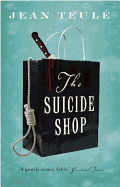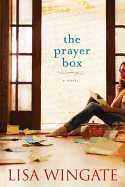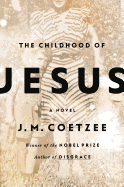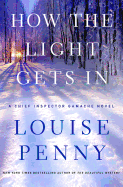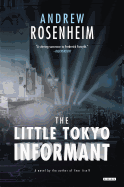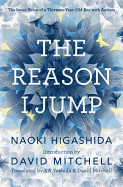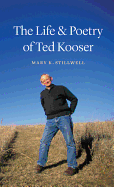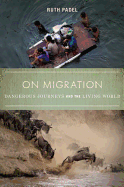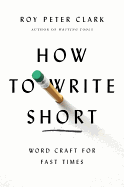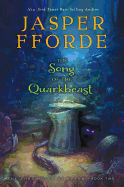 "I should never have studied literature so much," Pierre Lemaitre says of his life as a teacher before he began writing crime fiction. "When you analyze closely Tolstoy, Proust, Dumas, Dickens, James, Flaubert, Woolf, Hugo, Dos Passos, Pushkin, Thomas Mann or Zweig... how could you not be impressed?" he asks. "You have to have some nerve to think 'I, too, am going to write a novel.' You need a dose of madness which, unfortunately, I did not have." And then, he explains, "a woman entered my life who thumped the table and said, 'Get to work!' I was not crazy enough to start working but I was sufficiently docile to at least try...." The effort has paid off--Lemaitre recently won the Crime Writers Association International Dagger Award. While Alex is Lemaitre's first novel to be translated into English, he has several other hits in his native France, including other novels featuring Camille Verhoeven, the police investigator whose role in this story is frequently overshadowed by the kidnapping victim he's trying to track down.
"I should never have studied literature so much," Pierre Lemaitre says of his life as a teacher before he began writing crime fiction. "When you analyze closely Tolstoy, Proust, Dumas, Dickens, James, Flaubert, Woolf, Hugo, Dos Passos, Pushkin, Thomas Mann or Zweig... how could you not be impressed?" he asks. "You have to have some nerve to think 'I, too, am going to write a novel.' You need a dose of madness which, unfortunately, I did not have." And then, he explains, "a woman entered my life who thumped the table and said, 'Get to work!' I was not crazy enough to start working but I was sufficiently docile to at least try...." The effort has paid off--Lemaitre recently won the Crime Writers Association International Dagger Award. While Alex is Lemaitre's first novel to be translated into English, he has several other hits in his native France, including other novels featuring Camille Verhoeven, the police investigator whose role in this story is frequently overshadowed by the kidnapping victim he's trying to track down.
How did you arrive at the character of Alex, and what drew you into telling her story?
It's often the character that creates the structure of a novel. For Alex, it was the contrary. I wanted to play with one of the most important driving forces behind crime novels: the identification of the reader with the hero. In the first act, the main character would be positive. Then, in Act 2, the character appears negative and, finally, in the third act the reader notices that the character is actually both. The real difficulty was to avoid making the reader start to hate Alex in Act 2. Therefore, she had to be as endearing as possible--her weaknesses needed to be emphasized--so that the reader wouldn't consider her entirely negative when she happens to be such a ruthless criminal.
Once the structure was stable, I started looking for a character who would fit it. That's how Alex was born.
Alex is not the first novel you've written about Camille Verhoeven, the detective at the center of the story. How did you hit upon the character of a 4'11" police commandant as the protagonist of a series?
The model is my own father. I have no imagination....
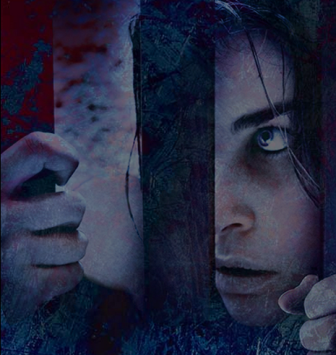 Is Alex's dominant presence in this narrative common to the novels, or does Camille play a larger role in the other stories?
Is Alex's dominant presence in this narrative common to the novels, or does Camille play a larger role in the other stories?
These are a trilogy, and Alex is the second novel. Camille appeared in my first novel, Irène, and he comes to the end of his literary career in Camille. The trilogy will then be complete--but not entirely. Dumas's "Three Musketeers" were, in point of fact, four. As a tribute to this author, who really mattered to me, my trilogy will also run to four volumes. A fourth part will find its place between Alex and Camille. Faithful to the suggestion of [Quercus publisher] Christopher MacLehose that the titles of my novels be first names, this novella will be called "Rosy & John."
The trilogy is based upon two main ideas. The first is that Camille is not the hero of these stories. Recurrent characters are often the heroes of their adventures (from Sherlock Holmes to Columbo, from Lloyd Hopkins to Wallander or Mikael Blomkvist). I wanted a different kind of hero, and that started out with the conception of a character who isn't the hero of his own life. The second idea was that the trilogy will consist of three women's lives (Irène, Alex, Anne). And I wanted Camille's destiny (he isn't a seducer, or is he...?) to be understandable through the destiny of these three women who, successively, occupy his life.
You've said that "crime fiction is to the 21st century what adventure novels were to the 19th." Can you elaborate on that?
Serial novels from the French 19th century were gathering three main characteristics. Intended for a very popular readership, they would propose adventures with suspense and they were, thanks to the faits divers they would often be based upon, the sounding board of the social climate of their time. That is more or less what crime novels do today, in France and elsewhere.
Who are some of your favorite crime writers, both internationally and in France?
In France: Caryl Férey, Thierry Jonquet, Didier Daeninckx. Abroad: William McIlvaney, David Peace, George Pelecanos, Carlo Lucarelli, Marcello Fois, Georgi Vaïner.
Are there any other French novelists you believe American readers should know about?
I don't know if authors such as Marie NDiaye, Jean Echenoz and Louis Guilloux are translated in the U.S. It would be a pity if they were not. [Editorial note: Marie NDiaye's Three Strong Women and Louis Guilloux's OK, Joe are available in English-language editions, as are several novels by Jean Echenoz, including a new book, 1914, that will be published in early 2014.]
You've said that French men don't really read much fiction, which is one of the reasons you write primarily for French women. What are your hopes in gaining new readers among British and American women with Alex, and beyond?
I hope that there will be many of them. Very, very many.... --Ron Hogan
Pierre Lemaitre: The Nerve to Write Novels
 Our Grandparents: A Global Album by Maya Ajmera, Sheila Kinkade and Cynthia Pon (Charlesbridge) features photographs of families around the world and suggests activities for readers to do with their grandparents. A trio of stories about three families--one white, one interracial, one Asian American--in the Caldecott Honor book More, More, More, Said the Baby by Vera Williams (Greenwillow) exudes the joy of a new baby, showered with affection. My Abuelita by Tony Johnston, illustrated by Yuyi Morales (Houghton Mifflin), unspools as a detective story sprinkled with Spanish words, as the boy narrator hints at Abuelita's profession (she's a storyteller).
Our Grandparents: A Global Album by Maya Ajmera, Sheila Kinkade and Cynthia Pon (Charlesbridge) features photographs of families around the world and suggests activities for readers to do with their grandparents. A trio of stories about three families--one white, one interracial, one Asian American--in the Caldecott Honor book More, More, More, Said the Baby by Vera Williams (Greenwillow) exudes the joy of a new baby, showered with affection. My Abuelita by Tony Johnston, illustrated by Yuyi Morales (Houghton Mifflin), unspools as a detective story sprinkled with Spanish words, as the boy narrator hints at Abuelita's profession (she's a storyteller).


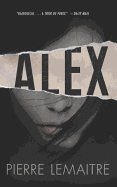

 "I should never have studied literature so much," Pierre Lemaitre says of his life as a teacher before he began writing crime fiction. "When you analyze closely Tolstoy, Proust, Dumas, Dickens, James, Flaubert, Woolf, Hugo, Dos Passos, Pushkin, Thomas Mann or Zweig... how could you not be impressed?" he asks. "You have to have some nerve to think 'I, too, am going to write a novel.' You need a dose of madness which, unfortunately, I did not have." And then, he explains, "a woman entered my life who thumped the table and said, 'Get to work!' I was not crazy enough to start working but I was sufficiently docile to at least try...." The effort has paid off--Lemaitre recently won the Crime Writers Association International Dagger Award. While Alex is Lemaitre's first novel to be translated into English, he has several other hits in his native France, including other novels featuring Camille Verhoeven, the police investigator whose role in this story is frequently overshadowed by the kidnapping victim he's trying to track down.
"I should never have studied literature so much," Pierre Lemaitre says of his life as a teacher before he began writing crime fiction. "When you analyze closely Tolstoy, Proust, Dumas, Dickens, James, Flaubert, Woolf, Hugo, Dos Passos, Pushkin, Thomas Mann or Zweig... how could you not be impressed?" he asks. "You have to have some nerve to think 'I, too, am going to write a novel.' You need a dose of madness which, unfortunately, I did not have." And then, he explains, "a woman entered my life who thumped the table and said, 'Get to work!' I was not crazy enough to start working but I was sufficiently docile to at least try...." The effort has paid off--Lemaitre recently won the Crime Writers Association International Dagger Award. While Alex is Lemaitre's first novel to be translated into English, he has several other hits in his native France, including other novels featuring Camille Verhoeven, the police investigator whose role in this story is frequently overshadowed by the kidnapping victim he's trying to track down. Is Alex's dominant presence in this narrative common to the novels, or does Camille play a larger role in the other stories?
Is Alex's dominant presence in this narrative common to the novels, or does Camille play a larger role in the other stories?